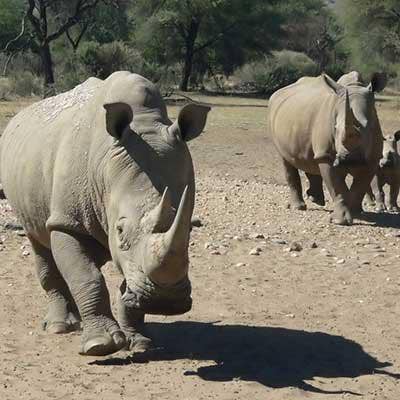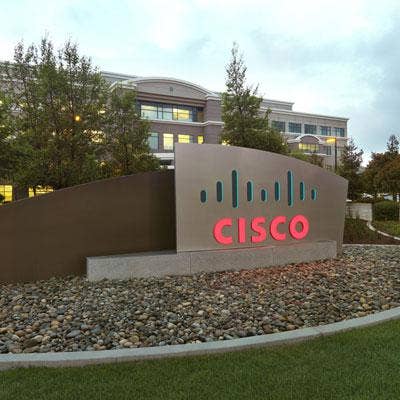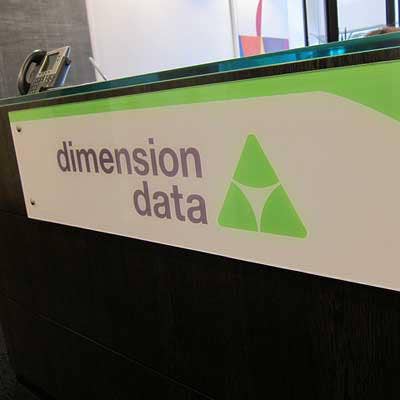IoT Channel Chronicles: Dimension Data Teams Up With Cisco To Protect Endangered Rhinos

Protecting Endangered Species With IoT
Dimension Data, in collaboration with Cisco Systems, is doubling down on the Internet of Things by using sensor, networks and data analytics tools to protect endangered rhinoceroses in South Africa.
Many rhinos are in danger of being poached for their horns. To help prevent poaching, Dimension Data is leveraging IoT technology, allowing officials to track and monitor individuals who enter and exit the gates in the unnamed South African private game reserve where the rhinos live.
Dimension Data and Cisco gathered information from game rangers, security personnel and control center teams – and created a secure Reserve Area Network [with] installed Wi-Fi hotspots around key points in the reserve. The two companies also worked to incorporate drones with infrared cameras, thermal imaging, vehicle tracking sensors and seismic sensors on the network.
As part of the weekly IoT Channel Chronicles series, CRN talked with Grant Sainsbury, senior vice president of strategic services at Dimension Data Americas about the unique system.

What are you seeing with channel in IoT?
What I like about the IoT space is, it moves [Dimension Data], with [its] technology history and expertise in the application of technology solutions...to being a lot closer to what our clients are trying to achieve in their business. I think that's why we're successful. It can't be technology for technology's sake. It's about the possibilities of what we can achieve and how we can drive real outcomes for clients – which will come in the form of a commercial outcome, a management of risk, moving into a new business space, competitive differentiation, and the like.

What new partnerships are you having to make because of IoT?
It's driving us to some new partnerships, to look at the segments and verticals we commit to. It's a new type of partner or partners we find ourselves working with. Whether we're in the connected real estate space [or] manufacturing, and we need partners in the sensor space - which often leads us into the world of operations technology, as well as the application data management space.

Why did Dimension Data pursue this specific project?
Connected conservation is a story that makes me proud to be part of Dimension Data. When we think about some of the ambition that we have – we talk about accelerating your ambition as our corporate call to action - and accelerating the ambition of our clients and society. And this certainly applies to the latter.
The rhino is an animal that is an endangered species, they are hunted for their horns. And Dimension Data, through our African heritage, has an interest in preserving these wonderful animals.

How did you work to figure out how IoT could solve the problem in this case?
As we come to the world of IoT, in this case it's not so much the ’why’ but more the ’how’ here and what are we trying to do. It's the imagination around how to solve the problem.
The rhinos are what we tried to protect and most efforts around conservation have focused around the animals. There have been efforts such as tagging the animals, putting biometric sensors on them, so we can monitor the animal and detect their stress levels – like when they're being hunted. But when you see the stress levels rise, it reduces the amount of time you have to react effectively [and] save the animal.
Instead of focusing on the animal, we decided to focus on the people trying to get to the animals.

What challenges did you face?
The challenge, which is what you find in many IoT [deployments, is] the environment. Where you see IoT being applied are generally places where IT is not well-suited for.
We think about IoT being applied in manufacturing spaces and industries like that. Here we're dealing with the African bush – which, with heat, lightning and moisture, is not a great place for technology and connectivity.
The other characteristic of the African bush is its vastness. We've deployed the solution in the game reserve [which] is [under 200 square miles] - a lot of ground to cover.
But the point of the use case here is letting the animals be animals to roam and do their thing, so putting them in small enclosures still doesn't serve the business outcome.

Talk about the technology side of this solution. How did you and Cisco work together to implement the solution?
[The solution includes] the deployment of sensors [for] area intrusion, tied to video solutions – both fixed camera and mobile – and then tied into a communications environment to alert game rangers and reaction forces. As well as securing the access points into the game reserve [by supplying data] back into information databases to allow the rangers to make better real time decisions on who enters and who goes. We've seen in the last year a dramatic improvement in the attrition rate of the animals and the goal in the protected area is to get down to zero kills, and to then look [for] ways to expand the solution.

How is this IoT application different for Dimension Data than other IT projects?
Looking at what's different here, it's the creativity and the thinking you bring to the problem. We know it's the animals we want to protect, the inclination is the focus on the animal – but the switch was to focus on the people trying to get to the animal. And that gives us the time we need to react and make a difference to the outcome.
So when I talked about the visual communications, both fixed and mobile, you'll see both fixed cameras that will need to support all life conditions – both day time and night time cameras and inter-thermal imaging - and then the mobile with the use of drones to extend the range and provide a reaction force to any detected threats. So that is deployed. And then the vehicle tracking is integrated into data stalls to allow the rangers to make better real-time decisions about controlling the access points into the reserve.

What verticals do you see as providing the most opportunity for IoT?
Dimension Data plays in most verticals. Are the verticals that we've been traditionally strong in the right ones for our IoT strategy? I think we'll see some evolution there. Prior to this, I probably wouldn't have said we were strong in the sports and entertainment vertical, but I think we've built something special there with the ASO partnership and Tour De France [IoT] application. [In 2015, the company scored a contract with ASO, the organizer of the Tour de France, to utilize Internet of Things technology to transform customer engagement experiences for the famous bike race].
We definitely see a lot of potential in spaces like manufacturing, automotive, and healthcare – all high potential in the IoT space.

Going forward, what's Dimension Data's strategy around IoT?
I really see IoT as an evolution of what we've been doing – not a revolution – I think the space is establishing some identity. For a company that comes out of a background of networking - and we've been in the IT space since the get go - we've seen the evolution of network technologies and architectures with the focus on data and workloads. This is the natural evolution of our business. And it's also tied into the vertical capabilities we have and will continue to grow.
This is where the market is going, everything is getting connected to the network.